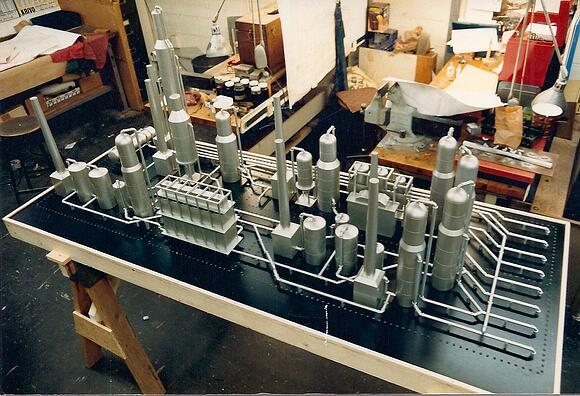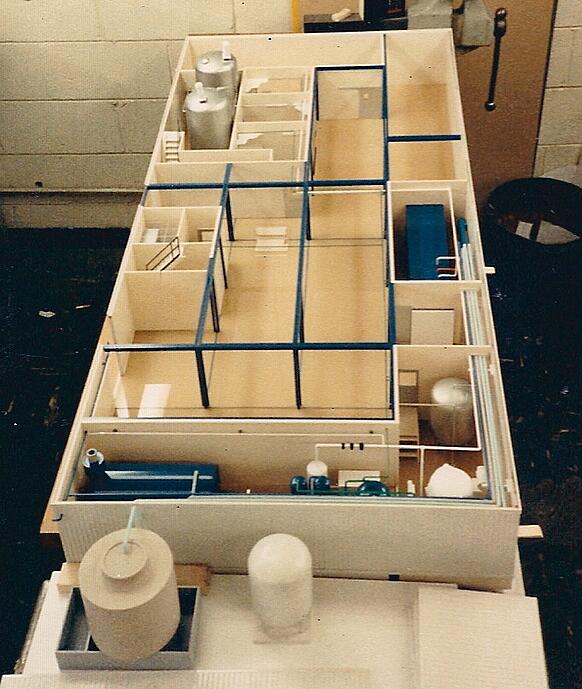A plant layout model is used as a design tool for arranging machinery, equipment, tool rooms, and the like in the best place to permit the quickest and smoothest production at the least cost. Plant layout models yield savings in construction and training, and they allow people with diverse expertise to collaborate on improvements.
Many engineering/construction companies and their clients use plant layout models to optimize the design and construction of complex plants like an industrial manufacturing facility, a chemical plant, a pharmaceutical plant, an oil refinery (like the one shown below), a food processing plant, or a nuclear plant. For these types of companies a plant layout model often encompasses a series of buildings, tanks, major equipment, and pipes on the site. The model may also have the roof removed from each building to display the machinery, equipment, and work flow inside.

ARAMCO oil refinery
Many manufacturing companies use physical models to plan and optimize the design when adding to an existing facility or modifying the current production layout. In this case plant layout usually refers to the floor layout of machinery, equipment, the shipping department, and the like in one building. Shown below is a pharmaceutical plant model that can be moved to a new location as a single unit.

This model is built to an exact scale to show piping, fittings, valves, equipment, structures, instrumention and other features that clarify the design. This means that:
- If there is a mistake in the drawings it will show up in this model, which is much less expensive to fix now before construction begins. The savings from preventing field changes often more than pay for the model. Especially when there is a maze of piping, a plant layout model eliminates all of the interference problems at the design level.
- The model can be used as a focal point for planning meetings to visualize how all the elements are interrelated while the plant is under construction and as a training aid once the plant is completed.
- When subcontract bidders can better visualize interrelationships by reviewing a plant layout model, their bids are lower.

The first real engineering process design model was fabricated in 1951 with all of the equipment, piping, and vessels in exact scale. However, building the model was time-consuming since many parts had to be hand formed. By the 1960's many of the parts needed for plant layout and process models (as well as many parts for architectural models) were being produced as precision-injected plastic molded parts available off the shelf in quantity and in a variety of scales. This greatly cut the time and cost of fabricating a plant layout model.
The planning and construction savings from using plant layout models as a design tool and the reduced cost of labor and materials to make the model with standardized parts and other modern methods are so great that almost every new plant has been designed with the aid of a plant layout model for several decades.
The approach to layout modeling varies by industry, location and plant. If you would like to have a plant layout model made to facilitate your next design, be sure to work with a model company that has built plant layout models, can show you the results, and is sensitive to your unique requirements. We can do that! Take the next step by contacting us at Model Builders, Inc., 773-586-6500 or info@modelbuilders.net .














